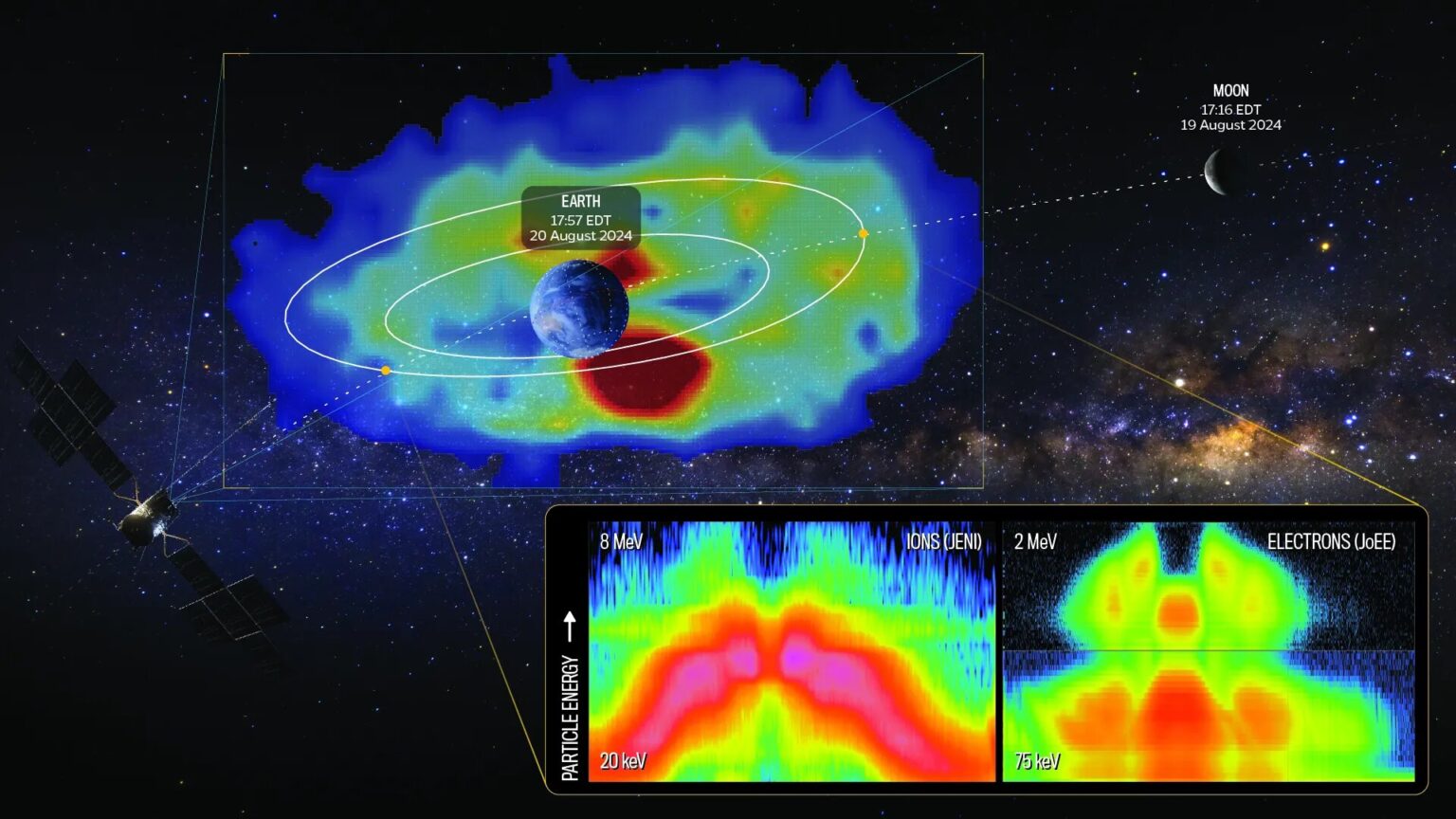Recently, the Juice spacecraft, bound for Jupiter, flew close to Earth to perform a gravitational maneuver. Instruments on board it received an image of the radiation belts of our planet, and it turned out to be the most detailed of all created so far.

Flight through the Earth’s magnetosphere
From August 19 to 20, the European Space Agency’s (ESA) Juice (Jupiter Icy Moons Explorer) mission made history with a daring flyby between the Moon and Earth and a double gravity assisted maneuver, marking the first space mission. As the spacecraft flew past our Moon and home planet, Juice’s instruments turned on for a test drive of what they would do after reaching Jupiter. During that time, NASA’s two onboard instruments added another first achievement to the list: they obtained the clearest-ever image of our planet’s radiation belts — bands of charged particles trapped in Earth’s magnetic shield, or magnetosphere.
The JENI (Jovian Energetic Neutrals and Ions) instrument, designed and operated by the Johns Hopkins Applied Physics Laboratory (APL) in Laurel, Maryland, took the image as Juice flew away from Earth. The things it recorded are invisible to the human eye.
NASA’s ultra-sensitive instrument
Unlike traditional cameras that rely on light, JENI uses special sensors to capture energetic neutral atoms emitted by charged particles interacting with the expanded atmospheric hydrogen gas surrounding the Earth. The JENI instrument is the latest generation of this type of camera, based on the success of a similar instrument on NASA’s Cassini mission that discovered the magnetosphere of Saturn and Jupiter.
“As soon as we saw the crisp, new images, high fives went around the room,” said Matina Gkioulidou, deputy manager of the JENI project at APL. “It was clear we had captured the vast ring of hot plasma encircling Earth in unprecedented detail, an achievement that has sparked excitement for what is to come at Jupiter.”
Juice’s meeting with the Earth and the Moon
On August 19, JENI and its Jovian Energetic Electrons (JoEE) satellite particle instrument made the most of its brief 30-minute encounter with the Moon. As Juice flew 750 kilometers above the surface of the Moon, the instruments collected data on the interaction of the space environment with our closest moon. Scientists expect this interaction to be amplified on Jupiter’s moons, as the gas giant’s radiation-rich magnetosphere extends over them.
On August 20, Juice entered Earth’s magnetosphere, flying about 60,000 kilometers over the Pacific Ocean, where the instruments first experienced the harsh environment awaiting them on Jupiter. Rushing through the magnetic tail, JoEE and JENI encountered the dense, low-energy plasma typical for the region before plunging into the heart of the radiation belts. There, instruments measured the million-degree plasma surrounding Earth to investigate the secrets of plasma heating, which are known to fuel dramatic phenomena in planetary magnetospheres.
Now, after utilizing the gravity of the Moon and Earth, Juice’s trajectory has been successfully adjusted for its upcoming rendezvous with Venus in August 2025. The flyby past Venus will serve as a gravitational slingshot that will bring Juice back to Earth and prepare it for its next two flights in September 2026 and January 2029. Only afterward, the spacecraft, already at high speed, will make its grand arrival at Jupiter in July 2031.
According to phys.org


